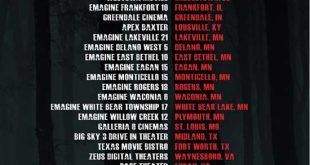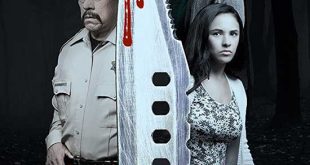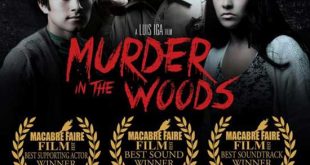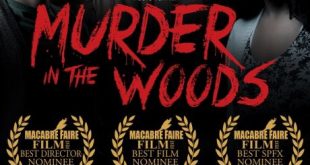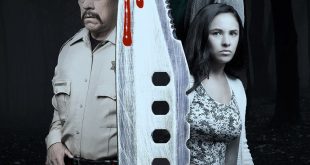 Hello Luis, Please tell us about “Murder in the Woods” and why you decided to direct the film?
Hello Luis, Please tell us about “Murder in the Woods” and why you decided to direct the film?
Luis- I grew up loving Slashers like “Halloween,” “Friday the 13th,” “Scream,” “I Know What You Did Last Summer” among others. I wanted to make a Slasher where we broke some of the tropes and challenge the genre by having an all-diverse cast in non-stereotypical lead roles. With my entrepreneurial spirit, I believe this was a great opportunity to direct a universal story that anyone can relate to and enjoy utilizing a diverse cast.
Additionally, the stories I like to tell are inspired by true stories, my experiences or by recreating an experience that I enjoy. For example, I am a big fan of roller coasters and how they make me feel. In my opinion that’s what Horror and Slasher films are all about. To put the audience in the character’s shoes and to immerse them in a wild ride that will make them jump and scream.
Did you always know that you wanted to be a filmmaker?
Luis- Yes, growing up watching films like Star Wars, E.T., Gremlins, Small Soldiers among others inspired me to be a filmmaker. At that time as a child artist SFX and VFX was the part I liked the most. I recall borrowing my father’s beta camera to shoot sequences with my G.I. Joe figures and buying fireworks at the corner store to recreate scenes with visual effect mini-explosions. Since then I knew I wanted to go to USC because my favorite Filmmakers, with the exception of Steven Spielberg, had gone to the School of Cinematic Arts at USC. It was a long journey; however in 2011 I got accepted to the MFA in Film and TV Production program additionally I was awarded the renowned Annenberg Fellowship. My favorite part of the program is that they accept students from any background, lawyers, doctors, filmmakers, etc. because of the diversity of backgrounds; we are able to analyze filmmaking from multiple perspectives and this collaboration makes the creativity of our work grow exponentially. The first year at USC we did 6 shorts, it was a boot camp where we got to experiment all aspects of filmmaking writing, producing, cinematography, sound design, editing, production design and directing. During this process is when I fell in love with directing. I fell in love with the intimacy and trust in the relationship between a director and the actors. We rely on each other to make the best work that we can. They put their full trust on my judgement and the direction of my vision in the film.
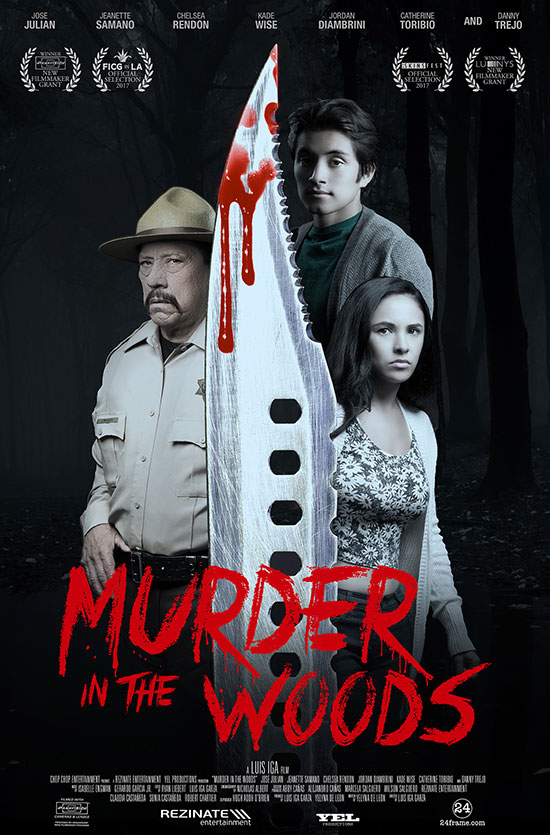 What was it like for you directing the cast?
What was it like for you directing the cast?
Luis- My favorite part of directing is working with the actors. I love the collaborative process to push a scene as far as possible to discover deep elements in the scene. The writer and my producing partner in this film Yelyna De Leon worked with many of our cast members in the film “A Better Life.” This helped the casting process since she wrote the script with some of these actors in mind. We held casting sessions only for the characters that we were missing in the film.
Sadly most roles for Latinos are very stereotypical, and one challenge that we had during the casting process for a couple of the roles was finding Latino actors that were used to acting in non-stereotypical roles. However at the end, we were very lucky an ended up with an amazing cast.
The film starts Jose Julian (A Better Life, Shameless), Jeanette Samano (ISA, Female Fight Squad ), Chelsea Rendon (McFarland, USA), Catherine Toribio (Jane the Virgin), Jordan Diambrini (The Outfield) and Kade Wise (Lucifer). It also features Danny Trejo (Machete), Soledad St. Hilaire (Beatriz at Dinner ), Kurt Caceres (Lawless Range) and Rolando Molina (American Dad! ). We shot in Topanga Canyon in the winter and it was pretty cold, we also shot 13 days overnight which made it challenging, however they were amazing and they gave 1,000%.
My goal is to give more opportunities to Latino talent in the films I direct and be part of the movement to bring diversity to Hollywood.
With Halloween only a few days away, do you have an all-time favorite Horror film you watch?
Luis- It’s hard to mention just one. In this genre I am a big fan of Kevin Williamson stories and West Craven so I have to say “Scream” and “I Know What You Did Last Summer” are in the top. However I also love Joe Dante’s “Gremlins” and “Small Soldiers” even though these might not be considered horror, there have great suspense and scary scenes. From the classics and the master of suspense “Psycho” and “The Birds.” I have to add the original “The Texas Chainsaw Massacre,” “The Hills Have Eyes” and “Friday the 13th” are also the films I watch around this time of the year. I apologize I could not stick to one :)
How do you feel the Slasher genre has changed over the years?
Luis- The horror genre has had a long journey. We can go back to the mid-1890’s when Georges Méliès experimented ghost and creatures in his work. Then we enter the Hitchcock era with his masterful and suspenseful films until “Psycho” in 1960. Many as myself believe that this film gave birth to the Slasher genre. The technique used in the classic Shower Scene has been used in many of the slashers to come; for example the axe scene in “Friday the 13th.” The slasher has gone in many directions in the 70’s, 80’s 90’s and today. However the Slashers that I want to focus on are the ones I enjoy. Which is when the genre turned into going after teens with “The Texas Chainsaw Massacre.” I guess for me it made it relatable; we all have gone camping, on a road trip, gone to parties and done “bad things” as teenagers with our friends. Hitchcock was a master of putting ordinary characters in extraordinary circumstances, that’s why the audience related to his characters so well and for me that’s why these type of Slashers work.
Over the years, the Slasher genre has evolved from being more suspenseful and less killings to having more blood, gore and slaughters. The era of “MTV” of fast cutting and moving the story faster has had a big impact in the genre. We have to find ways to tell a good story while being able to move the story fast enough to keep the audience interested. I believe with the cellphone era now we even have to move the story faster. Luckily with the technological advancement of VFX and CGI we are able to counter the need for moving the story faster with attractive FX and Gore that we couldn’t achieve before. We keep pushing the boundaries of the gore and that’s what the audience likes.
The films we see through history reflect the socioeconomic times of when those films were made. In this century, social inequality, greed, quick success and the disconnection of family and values at home have been sadly part of our culture. We see that reflection of our society being shown in some of recent slashers like “Your Next” and “Don’t Breath.” Another example of how the current times reflect on this genre are movies like “Unfriended.” I really enjoyed the way this film used our current technology and habits to tell the story.
I hope we keep pushing the boundaries of this genre and challenging it by using new stories, methods technology and the passion for a good Slasher.
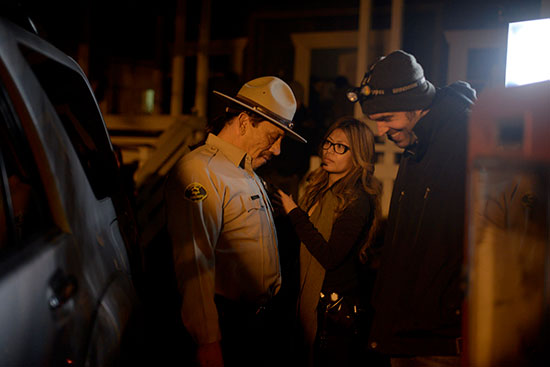 Did you face any challenges while filming? And what can you tell us about the locations?
Did you face any challenges while filming? And what can you tell us about the locations?
Luis- There were a lot of challenges. We shot this film in only 15 days. We had to shoot overnight in Topanga Canyon California 13 days. We only had one day for all the scenes that are not in the woods and to get the car scenes we only had one day as well. Luckily a good Friend of mine Robert Gould, who is an Emmy and Oscar nominated Set dresser introduced me to 24frame.com. They have amazing technology to shoot car scenes without greens screen or a process trailer. That was a lifesaver for us. Robert, the owner liked our story and became an EP on the project.
The nights in Topanga where challenging since it was really cold outside. Additionally since that area is prompt to wildfires, we needed a Fire Safety Adviser (FSA) on Site. The challenge was that every day we had a different FSA and each officer had different rules on how to deal with the heaters and electricity. We probably lost 2 to 4 hrs a day complying with their different rules. This took a lot from our production time so I had to keep my takes and setups to a minimal.
This was a very good experience and gave me a lot of confidence as a director. I had to change my shooting plan on the spot and think on my feet since we would not be able to accomplish what I had planned with the limited time to shoot.
The location we shot in Topanga I had used for a Short I produced at USC entitled “Eli’s Overcoat.” Norm, the owner of the location was very good to us and we had an amazing location for this film.
Regarding the camera and lenses, I was awarded with the Panavision New Filmmakers Grant and I’m very thankful to Panavision for believing in our film and helping diversity in Hollywood.
What do you want to say to the audiences that will be watching “Murder in the Woods?”
Luis- We made a “classic all-American teen slasher” with an all-Latino cast in non-stereotypical roles. This had not been done before in Hollywood and it’s one of the ways we challenged the genre. Once you watch the film I hope you find some other small elements we challenged about the genre. This film was fully inspired by the teen slashers I grew up with. I hope you enjoy the film!
 Horror News | HNN Official Site | Horror Movies,Trailers, Reviews
Horror News | HNN Official Site | Horror Movies,Trailers, Reviews
